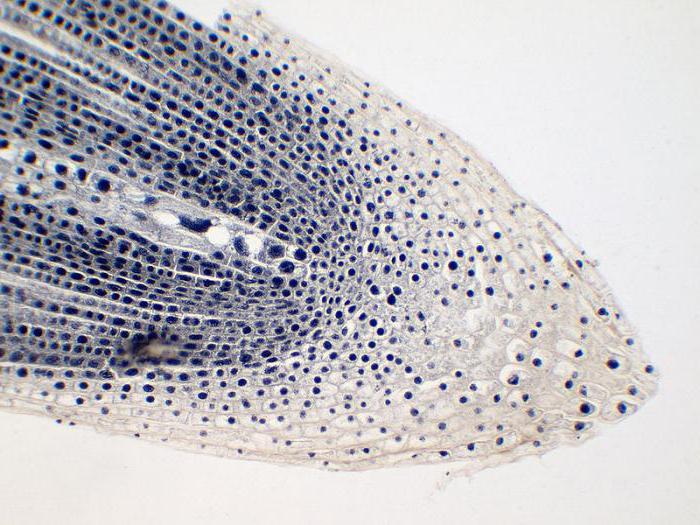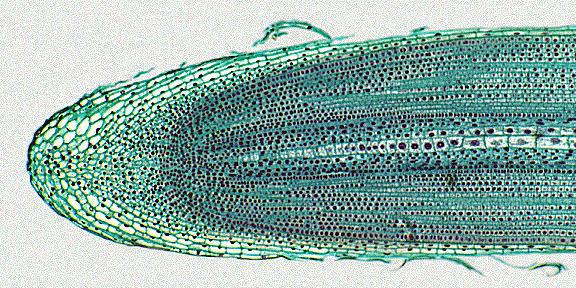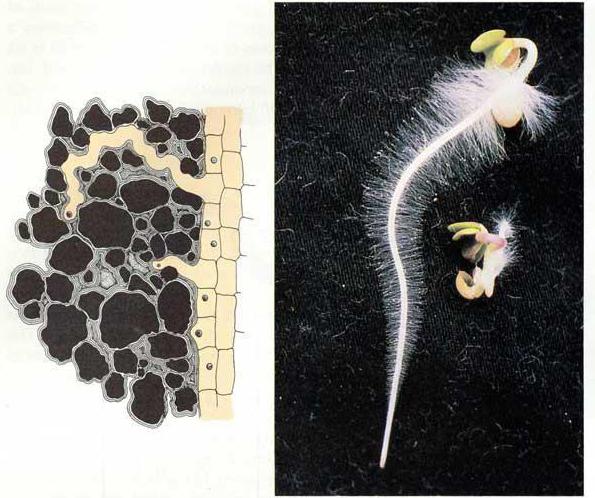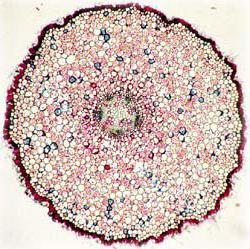Plant root zones. Zone of division, absorption, conduction, growth
Which allow it to carry out the most important functions in the plant body. The internal structure of this organ is distinguished by a clear differentiation, due to which the coordinated work of the whole organism is carried out.
What is a root
The root is the axial underground organ of the plant. Depending on the characteristics of the location, the main, lateral and accessory ones are distinguished. The first type is very easy to define. The main root of a plant is always one. It has side panels. Together they form It is characteristic of all representatives of the Dicotyledonous class, including the well-known families of Rosaceae, Nightshade, Aster, Cabbage, Legumes, and others. Directly depart from the shoot They grow in a bunch. Monocot plants have such a root system, which is called fibrous: Cereal, Onion and Lily.
Root functions
The main task of the underground organ is to fix the plant in the soil, providing it with water and mineral solutions. With the help of the root, compounds of nitrogen, potassium, iron, magnesium, phosphorus and other elements are absorbed from the soil. This process is called mineral nutrition. The obtained plant substances are used for independent synthesis of organic compounds.
Root and shoot carry out their functions in close relationship. The underground organ provides the plant with water with mineral solutions. They come from the root to all parts of the shoot. This is an upward current of substances. In turn, as a result of photosynthesis, organic substances are formed in the leaves. They move from the shoot to the root, carrying out a downward current.

plant root zones
If you cut the underground organ along its axis, you can easily notice the root zones. All of them are specialized, with a clear relationship between the features of the structure and the functions performed. The zones are arranged in the following sequence: root cap, division, stretching, suction, conduction. Already only by the names you can guess what elements of what tissues they consist of, and what is their role in the life of plant organisms. Let's consider each of them in more detail.

root cap
To penetrate deep into the soil, the root constantly grows with its tip. This function is performed by the root division zone, which is covered with a root cap. It reliably protects the cells of the educational tissue from mechanical damage, prevents damage to the top of the underground organ during its penetration into the soil.
The root cap is formed by several layers of living cells of the integumentary tissue. They are not homogeneous in their structure. So, the cells of the outer layer are constantly destroyed in contact with soil particles. Therefore, they require restoration. This process occurs due to cell division of the educational tissue from the inside. The root cap also plays the role of a kind of "navigator" for the underground plant organ. Since it has the ability to perceive the force of gravity, this zone determines the direction of root growth in depth.

meristem
This is followed by a part of the root, uniting two zones: division and stretching. Due to these structures, its size is increased. Therefore, it is called the root growth zone. What structural features does each of them have?
The root division zone is located behind the root cap. It is completely formed by an educational tissue - the meristem, the length of which does not exceed 3 mm. Its cells are small, tightly adjacent to each other, have thin walls. This zone has a unique ability. When it divides, cells of any other tissues are formed. This is very important for the restoration of lost or damaged parts of the organs of the plant organism.

Stretch zone
Beyond the meristem, the root growth zone continues with cells of a different type. They are constantly growing, lengthening, acquiring a fixed shape and size. This is the stretch zone. Its dimensions are also insignificant: only a few mm. Increasing in size, its cells move the meristem with the root cap deeper and deeper. The stretch zone is also created by the educational fabric. Therefore, cells of any type can form here.

root suction zone
The next structure has a larger size, occupying an area from 5 to 20 mm. This is the suction zone of the root. Its main function is to absorb water with a solution of nutrients from the soil. This process is carried out with the help of root hairs, which are outgrowths of cells of the integumentary tissue. Their length varies from a few millimeters to one centimeter. Sometimes this figure exceeds the size of the cells themselves.
Root hairs are constantly renewing formations. They live up to 20 days, after which they die. New hairs are formed from cells that are located near the growth zone. At the same time, they disappear at the top. Therefore, it turns out that the suction zone sinks deeper into the soil as the root grows.
Root hairs are very easy to damage. Therefore, during plant transplantation, it is recommended to transfer it along with the soil in which it grew before. These structures are quite numerous. On 1 square millimeter, several hundred are formed, significantly increasing the suction surface, which is several hundred times the area

Lateral roots
The root conduction zone, or lateral roots, is the largest. This is the area within which the underground organ thickens and branches. Here the lateral roots of the plant are formed. There are no root hairs in the conduction zone, so there is no absorption of nutrients from the soil. The root conduction zone serves as a "traffic highway" from the suction zone to the ground part of the plant.
Features of the internal structure
As you can see, all root zones are distinguished by a clear specialization. This also applies to the internal structure of the underground organ. On the cross section of the root in the suction zone, several layers are clearly visible. Outside is the covering tissue. It is represented by a single layer of living skin cells. They form new root hairs.
Under the skin is the bark. These are several layers of the main fabric. Through them, solutions of mineral substances move from the root hairs to the elements of the conductive tissue. The inner axial part of the root is occupied by the central cylinder. This structure consists of vessels and as well as elements of mechanical and storage tissue. Around the central cylinder is a layer of cells of the educational tissue, from which the lateral roots are formed.
Ways to form the root system
The knowledge about the structure and physiology of the underground organ of plants has long been used by man in his economic activity. So, in order to form additional roots that develop in the surface layer of the soil, it is recommended to hill the site and add soil to the base of the shoots.
To increase the number of lateral roots, the picking method is used. It is carried out during the transplantation of seedlings in open ground. To do this, the tip of the main root is pinched off from the seedling, as a result of which the entire system becomes more branched. Lateral roots grow, which means that soil nutrition of plants is carried out more efficiently. In addition, during hilling and picking, their predominant amount develops in the upper soil layer, which is more fertile.
So, root zones are sections of the axial underground organ of plants that differ in structural features. All of them are distinguished by a narrow specialization, due to the peculiarities of their structure. The following sections are distinguished: root cap, division, growth, including zones of stretching and absorption, and conduction.
